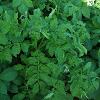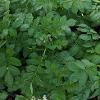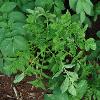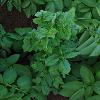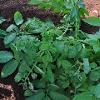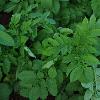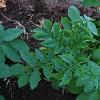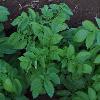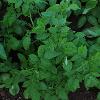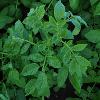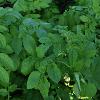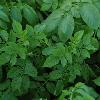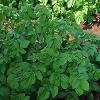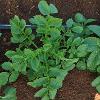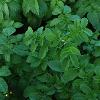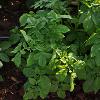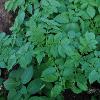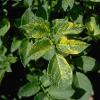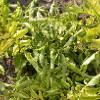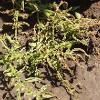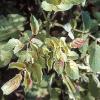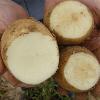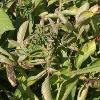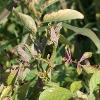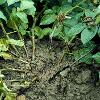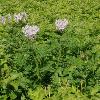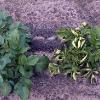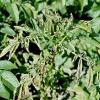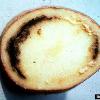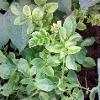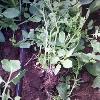Rogueing Guide
Roguing Seed Potatoes
This photo set is designed to educate roguers on the range of symptoms caused by PVY on different potato cultivars, as well as symptoms of other diseases commonly found in potatoes. Systematically remove all plants with mosaic diseases, witches broom, haywire, purple top and zebra chip as soon as symptoms are visible. The roguing process should be repeated at least 1-2 times during the summer. For genetic abnormalities like giant hill, it is crucial to remove these plants at the nuclear and generation 1 stages. Bacterial diseases such as black leg are better left undisturbed. In the case of ring rot, if suspect plants are identified, contact certification personnel immediately.
Potato Virus Y (PVY)
Additional pathogens to rogue
A Roguers Checklist
1. Take your time.
2. Keep the sun behind you.
3. When possible, rogue early in the morning on normal days. On cloudy days, you can rogue any part of the day, but don't become fatigued.
4. Use a hat to shade your eyes and polarized sunglasses to reduce glare.
5. Begin roguing when plants are still small to prevent the spread of diseases by plant-to-plant contact. As the normal plants enlarge, remove suspect smaller plants which could become hidden by their vigorous neighbors.
6. Use plastic bags or buckets to carry plants. Remove all plant material from field.
7. All rogued plant material should be disposed of either by composting (turn pile frequently), burying, or piles should be covered with plastic to prevent regrowth.
8. Wear rubber rain pants and boots.
9. Use proper sanitation. Keep clean by liberal use of disinfectants on tools, boots, rain pants and buckets.
10. Wear disposable plastic gloves to prevent pesticide poisoning if digging in insecticide bands and to reduce the spread of disease.
11. Clearly mark all suspect ring rot plants and call them to the attention of your boss immediately!
12. Except for ring rot, "When in doubt, take it out."
13. Try to touch only those plants you intend to rogue. Rogue plants on either side of obviously virus-infected plants.
14. Don't hesitate to dig for tubers and seed pieces; treat vines gently.
15. Consult with MSU inspection staff if you question symptoms.
16. Don't eat rogued tubers since they probably contain traces of pesticides.
17. Always remember the importance of the job you're doing.
Reference: Mosley, A., Gutbrod, O., McMorran, J. 2000. Roguing Seed Potatoes.
http://oregonstate.edu/potatoes/ROGUING.pdf

